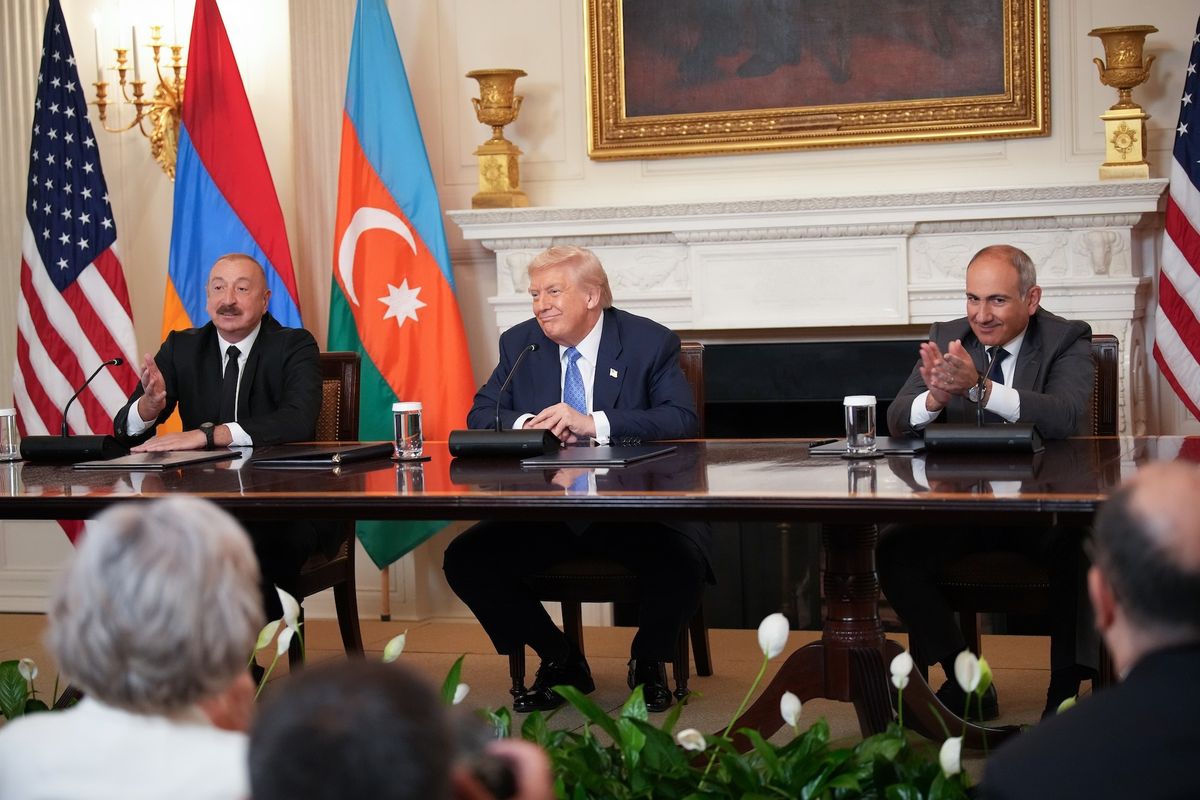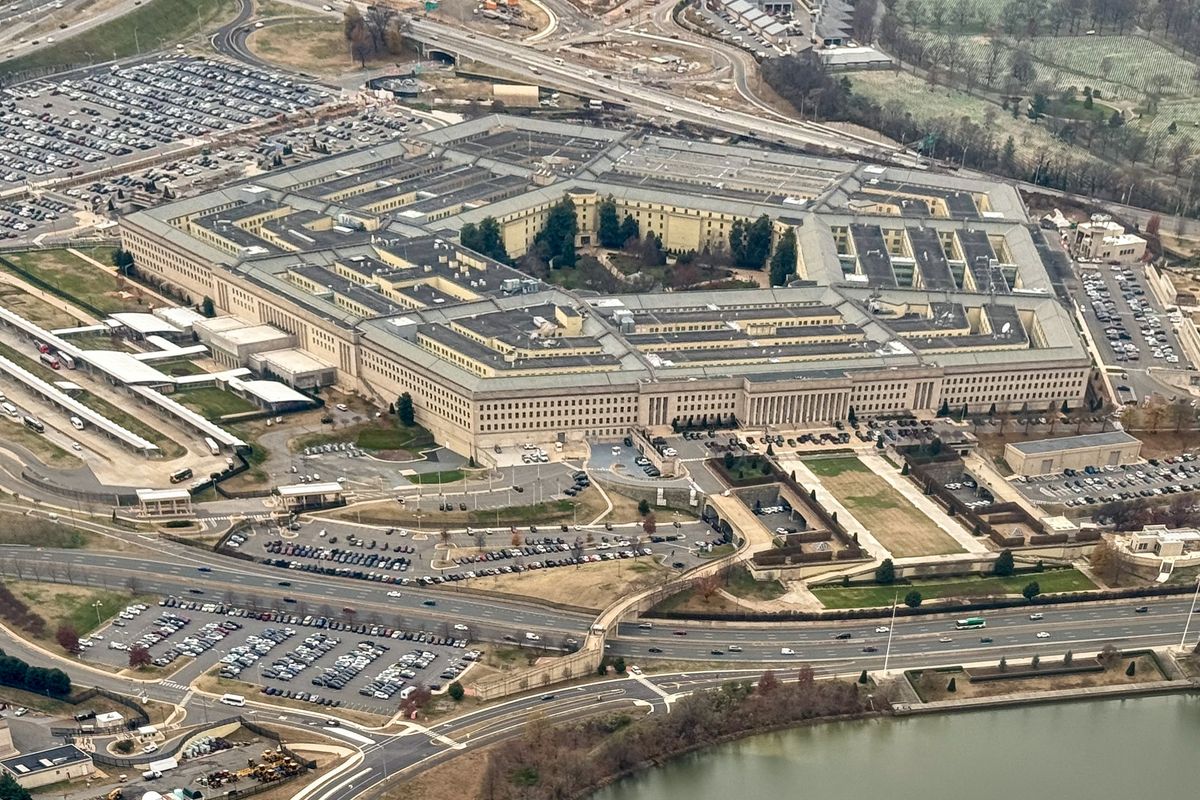OPINION – “For the first time since 1945, the first time for us as a nation, we have two nuclear adversaries. We have always put together a nuclear defense strategy that has one nuclear peer. We are going to have to roll up our sleeves to insure that we are doing everything we can strategy-wise within STRATCOM, meeting the objectives to take care of two nuclear peers…First time in history that we’ve seen that.”
That was Air Force Gen. Anthony J. Cotton speaking before the Senate Armed Services Committee last Thursday at his confirmation hearing to be the next head of U.S. Strategic Command after being asked about how the U.S. should deal with not only Russia but also China as nuclear peer threats.
For the most part, Cotton, a career missile and space officer, was cautious during the hearing, but his answers to repeated questions about the Russia/China nuclear threat raised my concern that a new strategy was being designed, and that it might result in calls for additionally deployed strategic nuclear weapons.
With China in the process of rapidly building up its ground-based nuclear ICBM force, Cotton said in a written answer to committee questions, “The current [U.S.] program of record is the absolute minimum USSTRATCOM requires to provide effective strategic deterrence today.”
Cotton went on, “As the threats from Russia and China continue to grow, we must continuously evaluate our nuclear force structure, capacity, and capability to ensure strategic deterrence remains credible and effective. Any identified nuclear capacity and capability gaps should be addressed as soon as possible.”
At another point he said, “What does it look like when you have two nuclear adversaries that act differently, but might work together, might not work together, but we still need to understand how do you execute against that threat?”
That study is already underway, because as Cotton said, “I know the work is currently being done within STRATCOM because…I’m offering input to that today.”
Pause for a moment.
As of today, the U.S. has deployed in silos, some 397 Minuteman III ICBMs with single nuclear warheads; 48 nuclear-capable bombers with the capability to carry 16-to-20 nuclear bombs or air-launched cruise missiles; and up to 240 multi-warhead, submarine-launched ballistic missiles carried on 14 strategic nuclear submarines (SSBNs), with probably 12 SSBNs either on patrol or available for action.
Subscriber+Members have a higher level of access to Cipher Brief Expert Perspectives on Global Issues. Upgrading to Subscriber+ Status now.
That means that every day, there are about 1,515 deployed, U.S. strategic nuclear warheads available for use, all but a few of them many times more powerful than the Hiroshima atomic bomb, with a majority of them on 24-hour alert.
Remember, 77 years ago, two atomic bombs — just two — killed roughly 110,000 Japanese in Hiroshima and Nagasaki and ended a war.
Perhaps this new STRATCOM study should look first at why we have over 1,000 nuclear weapons deployed today, before studying whether more are needed.
I have long argued that over the years, there were a series of political and military errors which led to excessive targeting of nuclear weapons. thanks to the military’s post-Pearl Harbor fears, which created the need for first or second strike capabilities that required hitting each of Russia’s, or any enemy’s, nuclear strike forces as well as other targets.
There also was the theory of deterrence which meant having more numbers and capability than the enemy, which along with the other theories, led not only to excessive numbers of targets, but also overkill stockpiles of those weapons.
In his book, Stockpile: The Story Behind 10,000 Strategic Nuclear Weapons, published in 2010, the late Vice Adm. Gerald E. Miller, an early Deputy Director of the Joint Strategic Target Planning Staff at SAC headquarters, primarily singled out President John F. Kennedy’s Defense Secretary Robert S. McNamara for the sharp increase in the number of U.S. nuclear weapons.
Miller wrote that McNamara rejected the Eisenhower strategy for achieving deterrence by “massive retaliation,” which meant threatening the destruction of the Soviet urban/industrial base or city busting. McNamara didn’t want to be seen as using nuclear weapons as a terror weapon to kill civilians, although that’s what they were originally designed to do. Instead, he mandated a strategy that called for hitting the individual Soviet nuclear ICBM silos, bomber bases, submarine ports and their command posts.
Miller claimed that when McNamara took office in 1961, the U.S. war plan called for about 3,500 nuclear weapons. When he left the Pentagon seven years later, that figure was about 7,000 and heading for 10,000, according to Miller.
The ability to put multiple warheads on one ICBM (MIRVs) led to another burst of nuclear warheads that required additional targets, rather than reducing the number of delivery systems.
The Cipher Brief Threat Conference is happening Oct 9-11. If your organization is in the business of national security, you have to ask yourself, can you afford to miss it? Request your seat at the table.
Air Force Gen. George Lee Butler, who headed Strategic Air Command from 1991 to 1994, said in a 2015 interview, that at one point, the U.S. had 400 nuclear weapons targeted on Moscow alone. Butler added, “Deterrence was an open-ended invitation to just build more, and more complicated systems. We always found a reason to go to the next level of arms, or the next hot technological biscuit to come popping out of the oven.”
Looking forward, Butler said, “Fifteen hundred nuclear warheads [deployed by both the U.S. and Russia today] is still a mind-boggling amount of destructive potential. Mind boggling. I can’t think of anything that underscores that better than how concerned we are about one falling into the wrong hands. We still readily accept 1,500 as a reasonable number. That’s the kind of ‘logic’ that we get locked into, in the nuclear era.”
A Pentagon-led review initiated in 1989, by then Defense Secretary Dick Cheney, supported by SAC Commander Butler, concluded that the U.S. had far more strategic nuclear weapons than required for deterrence of the then-Soviet Union. That review paved the way for President George H. W. Bush’s 1991 Presidential Nuclear Initiative (PNI) which led not only to an eventual strategic nuclear arms treaty, but also major reductions in U.S. tactical weapons.
Perhaps Gen. Cook and Defense Secretary Lloyd Austin can take a lesson from the Cheney/Butler approach to nuclear weapons.
As Butler said in a 1996 speech, "Accepting nuclear weapons as the ultimate arbiter of conflict, condemns the world to live under a dark cloud of perpetual anxiety."
Back in March, the Biden administration produced an unclassified, three paragraph “fact sheet” about its still-classified 2022 Nuclear Posture Review (NPR), which is supposed to establish U.S. nuclear policy, strategy, capabilities and force posture for the next five to ten years.
The Biden administration “fact sheet” said in part, “As long as nuclear weapons exist, the fundamental role of U.S. nuclear weapons is to deter nuclear attack on the United States, our allies, and partners. The United States would only consider the use of nuclear weapons in extreme circumstances to defend the vital interests of the United States or its allies and partners.”
In his answer to committee questions, Cotton said that the 2022 NPR reaffirmed that U.S. ICBM 24-hour alert posture “is appropriate and contributes to strategic stability.”
He also said that declaratory policies for U.S. nuclear weapons such as No First Use or Sole Use “would have a detrimental effect on strategic deterrence and our extended deterrence commitments to our Allies and partners. A strategy of Calculated Ambiguity, which is supported by our Allies, is the most effective way to deter Russia, China, North Korea or other nuclear armed adversaries.”
Cotton added that the 2022 NPR retains the goal of moving toward a Sole Purpose, which had been a Biden campaign promise, but which has not gotten the required agreement from Allies and partners.
Cotton ducked around two controversial nuclear weapons which the Biden administration defunded from the fiscal 2023 Biden budget and probably eliminated as part of the 2022 NPR. They are development of a new sub-launched nuclear cruise missile (SLCM-N) that the Trump administration sought, and continuing in the stockpile, the 40-year-old B-83 nuclear bomb whose megaton explosive power would be used for hardened, and deeply buried targets.
The man Cotton’s replacing, present STRATCOM Commander, Adm. Charles Richard and other senior Pentagon officials support both weapons as do most Republicans and many Democrats.
With regard to the SLCM-N, Cotton said the argument is that the proposed low-yield nuclear weapon fills a “capability gap” in the U.S. stockpile, and “I endorse the fact that we have to fill that capability gap myself.” However, he said he wanted to make his own assessment of the SLCM-N because he admitted, “I am not familiar with that weapons system on the specifics of what it can do, its capabilities to close the capabilities gap that we might perceive.”
No Senator asked him what the “capability gap” was in the stockpile that required a new SLCM-N in the first place, although the general answer to that kind of question normally turns out to be the military wants to have as many nuclear options and capabilities as possible to present to a President in a time of crisis.
As for the B-83, the Obama administration approved its replacement with the B-61-12, but when there were delays, the Trump administration decided to begin refurbishment of the B-83. Now, production of the B-61-12 has begun, however some Members of Congress along with Adm. Richard want to keep the B-83.
Cotton, asked about dealing with hardened, deeply buried targets, said he wanted to look at options for dealing with them, suggesting that along with nuclear weapons there might even be conventional ones that could do that job. However, when asked directly if the B-83 should be retained “until we have a suitable replacement,” Cotton went back to the old argument, “We ought to have an opportunity to have options, and if that is taken off the table then we no longer have an option to provide.”
The Cotton hearing offered Senators an opportunity to learn more about the current STRATCOM study of how the U.S. should respond to the coming prospect of facing both Russia and China as two peer nuclear powers.
Hopefully Senate and House Armed Services committees will do so in the future, remembering former-SAC Commander Butler’s words that deterrence has been “an open-ended invitation to just build more, and more complicated systems.”
Read more expert-driven national security insights, perspective and analysis in The Cipher Brief













